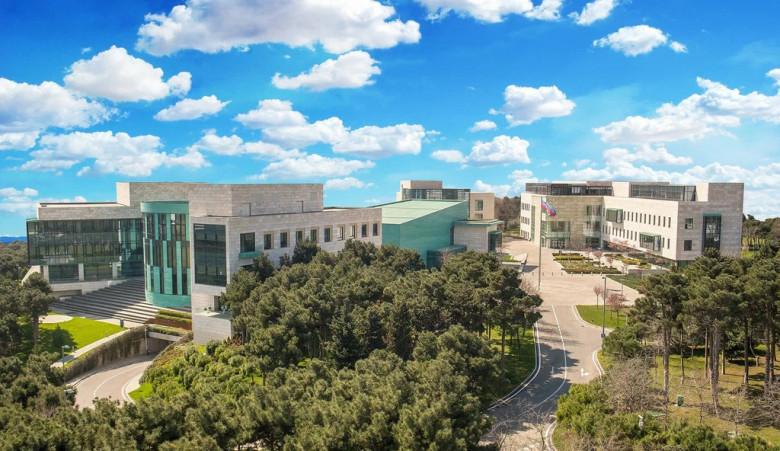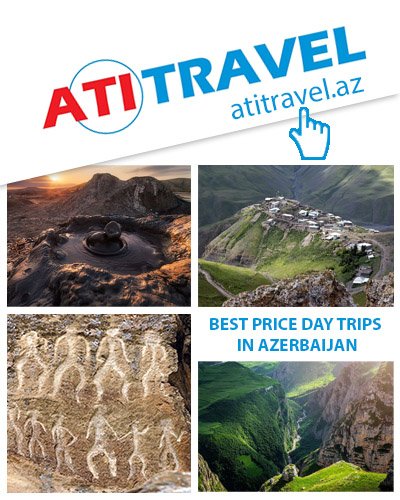-
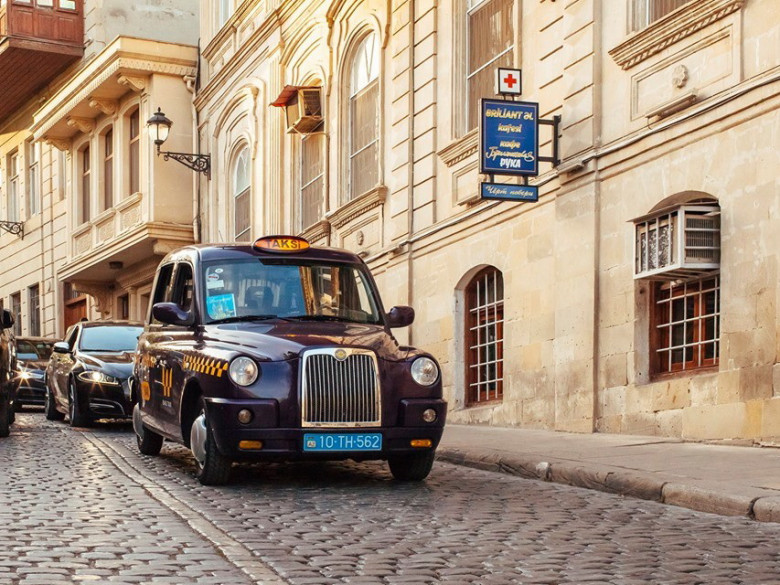 Baku Transportation: How to Get Around the Capital of Azerbaijan
18
0
Baku Transportation: How to Get Around the Capital of Azerbaijan
18
0
-
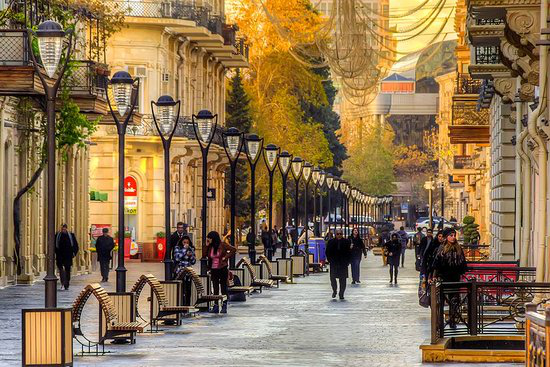 Nizami Street in Baku — A Cultural and Shopping Hub of Azerbaijan
18
0
Nizami Street in Baku — A Cultural and Shopping Hub of Azerbaijan
18
0
-
 Where to Exchange Currency in Baku: Dollars, Euros, and Rubles to Azerbaijani Manat
8
0
Where to Exchange Currency in Baku: Dollars, Euros, and Rubles to Azerbaijani Manat
8
0
-
 List of Baku Beaches: Where to Enjoy Your Beach Holiday by the Caspian Sea?
12
0
List of Baku Beaches: Where to Enjoy Your Beach Holiday by the Caspian Sea?
12
0
-
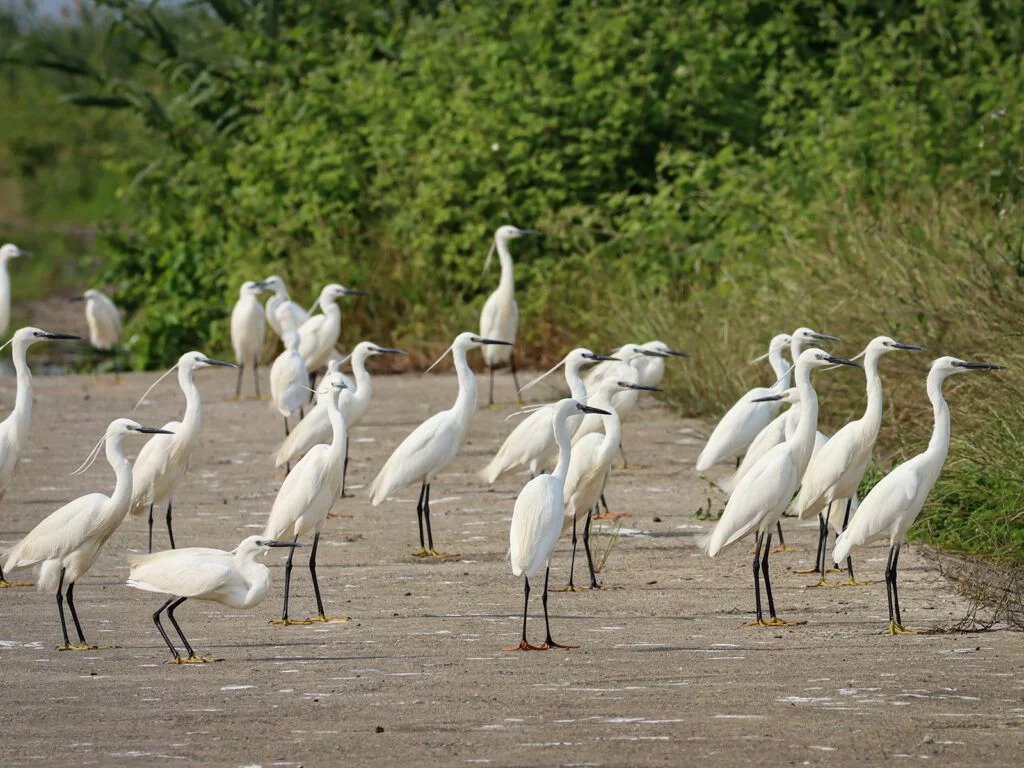 National Parks of Azerbaijan: Nature’s Treasures Await
10
0
National Parks of Azerbaijan: Nature’s Treasures Await
10
0

F1 Baku: Racing Through the Heart of Azerbaijan
Every year, the streets of Baku transform into one of the most thrilling circuits in the Formula 1 calendar – the Baku City Circuit. 🏁 Framed by the Caspian Sea and the historical charm of Icherisheher, this race combines pure speed with stunning surroundings. If you’re looking for the perfect mix of adrenaline and adventure, the Formula 1 Azerbaijan Grand Prix is your ultimate destination!Why Baku?Baku is not just a race location – it’s a whole experience. The city combines East and West, ancient and futuristic, with glamorous energy that perfectly suits Formula 1. Renowned for its high-speed straights and sharp turns, the Baku City Circuit winds through the city center and past stunning UNESCO landmarks. Drivers love it. Fans adore it.What to Expect at the Grand PrixFrom the roaring engines to live concerts, this weekend is about much more than racing. Expect:High-speed battles through the narrow Old City turnsSet against the striking silhouette of the Flame Towers and the sparkling Caspian Sea shoreline.Open-air entertainment zones, fan festivals, and local foodAfter-race events and A-list musical performancesWhether you're a seasoned fan or first-time visitor, tours in Baku during F1 weekend are unforgettable.Where to Buy TicketsWant to grab your spot on the stands or experience luxury in the paddock club? Here are some trusted sites to purchase tickets:🔗Official Formula 1 Website (English)🔗Gootickets – F1 Azerbaijan Grand Prix🔗Tickets Grand PrixPrices vary depending on seat location and package, so book early for the best deals.Make It a Full ExperiencePair your Formula 1 experience with some of Baku’s top attractions:Discover Icherisheher (Old City), a UNESCO World Heritage treasureVisit the Heydar Aliyev Center, an architectural masterpieceStroll along Baku Boulevard or enjoy a relaxing boat trip on the Caspian SeaEnjoy traditional Azerbaijani cuisine in restaurants near the trackThe Formula 1 Baku Grand Prix 2025 is more than a race — it’s a weekend of culture, speed, and celebration. Whether drawn by the thrilling roar of the engines or the lively energy of the city, Baku provides an unforgettable Formula 1 experience.So gear up, book your tickets, and prepare for a weekend of world-class racing and warm Azerbaijani hospitality! 🏎️

Nizami Street in Baku — A Cultural and Shopping Hub of Azerbaijan
Planning a trip to Baku and want to explore one of the most vibrant and iconic streets in the city? Welcome to Nizami Street — a true heart of the capital, where history, modern life, shopping, and gastronomy meet in perfect harmony. Whether you're passionate about history, love to shop, enjoy good food, or simply like to explore new places, Nizami Street offers something to delight every kind of traveler.🌟 What Makes Nizami Street Special?Nizami Street (locally known as "Torgovaya") is a pedestrian-only avenue stretching for several kilometers through the center of Baku. Named after the great Azerbaijani poet Nizami Ganjavi, this street is more than just a shopping destination — it’s a cultural landmark. The elegant buildings in Baroque, Neoclassical, and modern styles reflect Baku’s rich architectural heritage. The atmosphere here is lively day and night, with beautiful lights, music, street performers, and cozy cafes all around.🛍 Shopping on Nizami StreetIf you’re looking for the best shopping in Baku, Nizami Street is the place to go. You'll find everything from international luxury brands to local designer boutiques:Zara, Massimo Dutti, Bershka, Mango – popular global fashion storesAlighieri, Art East – unique local designersNargis Shopping Center – for a high-end shopping experience💡 Tip: Many shops offer tax-free shopping for tourists, so don’t forget to ask at checkout.🍽 Where to Eat on Nizami StreetExploring the street can make you hungry! Fortunately, Nizami Street boasts a fantastic variety of restaurants and cafes serving cuisines from around the world:Entree Baku – Georgian and European cuisine with delicious bakery treatsDolma Restaurant – traditional Azerbaijani dishes in a cozy, authentic settingChinar – contemporary Asian fusion cuisine served in a sleek and stylish setting.Nergiz Restaurant – national cuisine and live music in an atmospheric environmentPaul – French café chain known for its pastries and coffeeFiruza – great spot for Azerbaijani kebabs and pilafsCoffee Moffie – specialty coffee📷 Things to See and DoHistorical Architecture – admire buildings from the 19th and early 20th centuriesStreet Performers – enjoy local music, art, and dance along the pedestrian zoneFountains Square – a vibrant gathering place located in the center of Nizami Street.Evening Strolls – the street looks magical under the night lights, perfect for a walk✅ Tips for VisitorsNizami Street is best explored on foot — wear comfortable shoes.Most shops and restaurants accept credit cards.It’s safe to walk around even late in the evening.Great photo ops await at every corner!📌 ConclusionNizami Street is one of the must-visit places in Baku — whether you're here to shop, taste Azerbaijani cuisine, explore history, or just enjoy the vibrant city life. Make sure to include it in your travel itinerary and experience the soul of Baku through this unforgettable avenue.✨ Discover more travel tips and guides on TourisminAzerbaijan.az and enjoy the beauty and culture of Azerbaijan with us!

Where to Exchange Currency in Baku: Dollars, Euros, and Rubles to Azerbaijani Manat
Planning a trip to Azerbaijan’s capital and wondering where to exchange your dollars, euros, or rubles for manats? 🏦 Discover how to exchange currency securely and at the best rates, what rates to anticipate, and where to locate the most trustworthy exchange offices.. Learn how to exchange money safely and profitably, what exchange rates to expect, and where to find the most reliable exchange offices.💰 Azerbaijan’s National CurrencyThe Azerbaijani manat (AZN) is the official currency used in Azerbaijan. Banknotes in circulation come in denominations of 1, 5, 10, 20, 50, 100, and 200 manats, along with coins called qəpik. Before your trip, it’s a good idea to check the current exchange rates for USD to AZN, EUR to AZN, and RUB to AZN — this will help you make informed decisions when exchanging money.📍 Where to Exchange Currency in Baku?In Baku, you have several options for exchanging foreign currency into Azerbaijani manats:1. BanksBanks are one of the safest places to exchange money. Most banks operate Monday to Friday from 9:00 AM to 5:00 PM. Some branches in downtown Baku are also open on weekends.Popular banks for currency exchange include:Kapital BankPasha BankInternational Bank of Azerbaijan (IBA)Bank Respublika👉 Advantages: Official exchange rates, reliability, and receipt after the transaction👉 Disadvantages: Possible queues and limited working hours2. Currency Exchange Offices (Exchange Bureaus)Many private exchange offices operate in tourist areas of Baku, some open late and others even 24/7.Where to find them:City center (Fountain Square, Nizami Street, Baku Boulevard)Popular shopping centers include Ganjlik Mall, 28 Mall, and Port Baku Mall.Near metro stations and bus stops👉 Advantages: Convenient locations and flexible hours👉 Disadvantages: Exchange rates may be less favorable, especially in tourist hotspots3. Currency Exchange at Heydar Aliyev AirportIf you want to get local currency right upon arrival, banks and exchange offices are available at the international airport. Keep in mind, airport exchange rates are usually less favorable than those in the city. It’s best to exchange a small amount here for taxi fares or snacks and exchange the bulk of your money in downtown Baku.⚠️ Helpful Tips for Tourists💳 Card or Cash? Card payments are widely accepted throughout Baku — in hotels, dining places, stores, and even taxis.However, cash is still useful, especially in small shops and outside the city center.💸 Monitor Exchange Rates: Rates fluctuate, so check the latest official rates before exchanging money on the Central Bank of Azerbaijan website or via mobile apps.🔒 Safety: Do not exchange money with unknown people on the streets. Avoid exchanging money with strangers on the street.🛑 Commission Fees: Most exchange offices do not charge a commission, but it’s best to confirm before making a transaction.🗺 Insider Advice: Where to Exchange Money Best?The best rates and security are found at major banks or official exchange offices in downtown Baku. For example, Nizami Street hosts several reputable exchange points. Avoid street vendors and suspicious spots — they may not be safe.📌 ConclusionExchanging currency in Baku is easy and convenient when you know where to look for the best deals. Reliable banks, convenient exchange offices, and local tips will help you manage your money smartly and enjoy your trip without worries.Planning your visit to Azerbaijan? Follow TourismInAzerbaijan.az for more useful guides and explore the country with us!✨
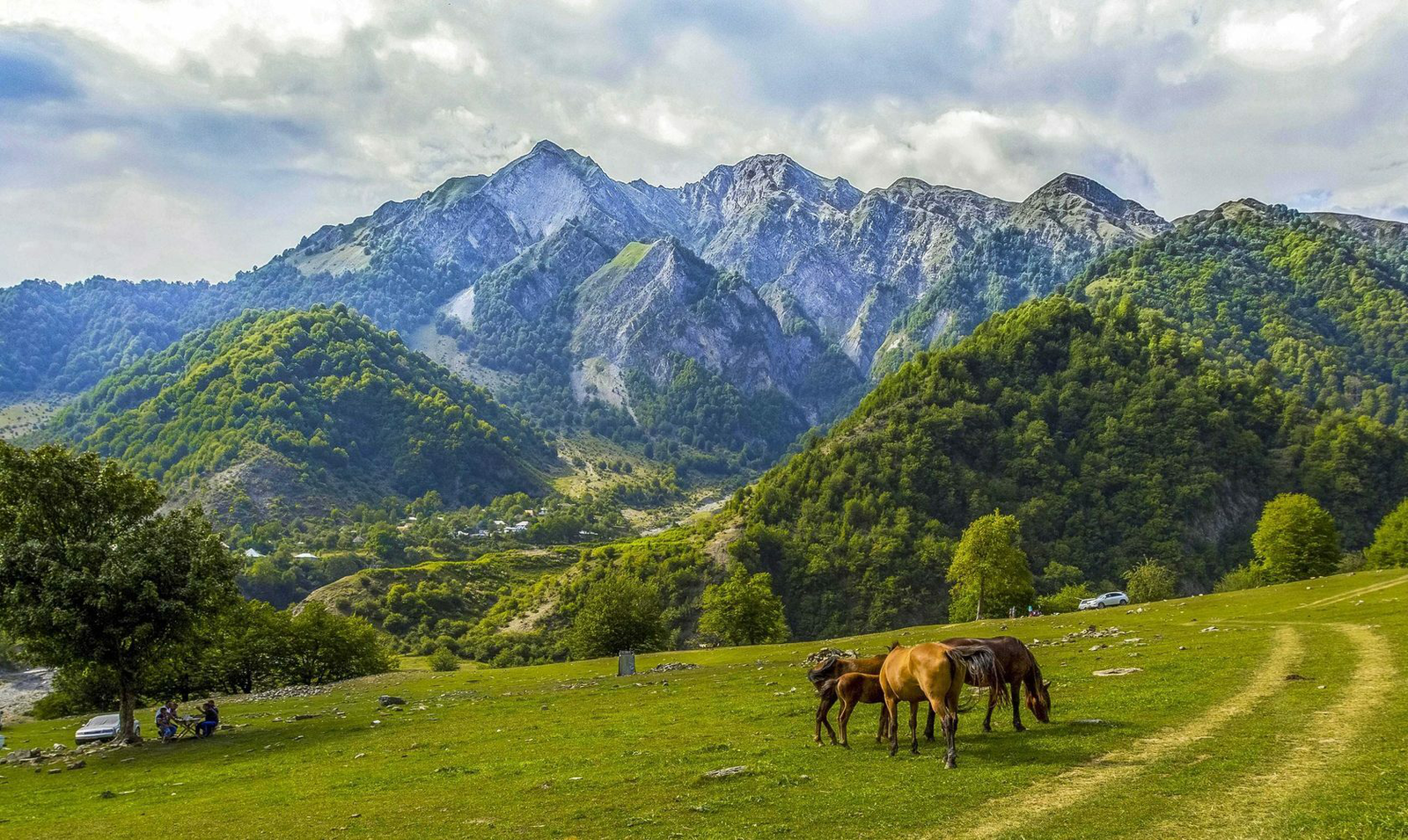
Nature of Azerbaijan: From the Caspian Sea to Majestic Mountains
Planning a trip to Azerbaijan and want to discover more than just ancient cities and delicious cuisine?Then get ready for a true revelation — the nature of Azerbaijan will astonish you with its stunning diversity and contrasts. This is a land where snow-capped mountains meet subtropical forests, deserts blend into lush alpine meadows, and the warm Caspian Sea mirrors icy mountain lakes. Azerbaijan's natural beauty is like a journey through different climate zones and landscapes, where every turn reveals a breathtaking view. In a single day, you can go from sunbathing by the sea to hiking in the mountains, from listening to cicadas in the Talysh forests to feeling the wind whispering through rocky canyons. Such diversity makes Azerbaijan a perfect destination for ecotourism, wildlife photography, adventure seekers, and lovers of rare flora and fauna.Welcome to Azerbaijan — where nature speaks louder than words.🏔️ Majestic Mountains of the Greater and Lesser CaucasusThe mountains cover a significant part of Azerbaijan. To the north, the towering Greater Caucasus stretches skyward, with summits exceeding 4,000 meters. These regions offer awe-inspiring panoramas, deep gorges, glaciers, and peaceful alpine meadows. Must-see places include Mount Tufandag in Gabala and the ancient mountain villages of Khinalig and Laza, nestled high among the clouds. The Lesser Caucasus in the west is equally enchanting, covered in lush forests and vineyards, and dotted with serene mountain lakes such as Lake Goygol and Maralgol — ideal for photographers and nature lovers alike.🌊 Caspian Coastline — The Soul of Azerbaijan’s Seaside NatureThe Caspian Sea is a unique ecosystem that shapes the climate of eastern Azerbaijan. As the world’s largest enclosed body of water, its salty composition creates special conditions for marine life. The coastlines of Baku and the Absheron Peninsula are famous for their sandy beaches, therapeutic muds, mineral springs, and tranquil bays. From May to October, the warm sea invites visitors to enjoy swimming, diving, fishing, and boat tours. Popular resorts and family-friendly beaches are found along the shore, along with hidden spots where breathtaking sunsets reflect off the water.🌳 Forests and Biospheres: Azerbaijan’s Green TreasuresForests make up about 12% of Azerbaijan’s territory and represent an amazing variety of plant life. In the southern Talysh Mountains, Zagatala, and Lankaran, you'll find subtropical and broadleaf forests home to rare species such as ironwood, chestnut, plane tree, and beech. These forests shelter endangered animals like the Caucasian leopard, brown bear, lynx, and over 400 bird species. Specially protected areas and national parks, like the Hyrcanian Forest (a UNESCO World Heritage site), preserve this biodiversity. Azerbaijan is home to 10 national parks, each safeguarding distinct ecosystems — from wetlands to highland forests.💧 Lakes, Rivers, and Waterfalls: Natural Harmony of WaterAzerbaijan is rich in freshwater resources that enhance its scenic beauty. Lakes like Goygol, Maralgol, Nohurgol, and Aggol are known for their crystal-clear waters and peaceful surroundings. Waterfalls such as Afurja, Misdere, and Laza are most striking in spring when the melting snow feeds roaring torrents. The Kura and Araz rivers — the country’s main arteries — nourish fertile lands, support biodiversity, and sustain agriculture across large areas.🌋 Natural Wonders: Mud Volcanoes, Healing Springs & CavesAzerbaijan holds the world record for the number of mud volcanoes — over 350! The Gobustan region is famous for its bubbling mud pools and otherworldly, lunar-like landscapes. Highlights include the Toragay and Bahar volcanoes, protected natural landmarks popular with tourists. Mud springs in Naftalan and Masalli are celebrated for their healing properties. Caves in Nakhchivan and Guba preserve traces of ancient civilizations and attract both archaeologists and adventurous travelers.☀️ Climate of Azerbaijan: Diversity and ExtremesThe climate of Azerbaijan is remarkably varied, influenced by its diverse landscapes and the interaction between the Caspian Sea and surrounding mountains. The Caspian coast enjoys mild winters and hot, humid summers. The lowlands experience scorching, arid summers and relatively mild winters. In contrast, the Greater and Lesser Caucasus Mountains experience a sharply continental climate, with cool summers and snowy winters — ideal for skiing and mountain tourism. The southern Lankaran region and Talysh Mountains feature a humid subtropical climate, supporting lush forests and vineyards. This climatic richness enables the cultivation of a wide range of crops, including grapes, fruits, and tea.🐾 Wildlife and Flora: Biodiversity at Every TurnAzerbaijan boasts a rich biodiversity, with over 4,500 plant species and more than 1,000 animal species, including rare and endemic ones such as the Caucasian leopard, stone marten, griffon vulture, and East Caucasian tur. Spring transforms the country into a blooming garden, especially in the south and in the foothills, where wild tulips, poppies, and saffron flourish. Nine national parks and dozens of nature reserves safeguard the country’s diverse ecosystems and support sustainable conservation.🎒 Nature Tourism: Adventures for Every ExplorerAzerbaijan offers a wide array of outdoor activities for nature lovers: hiking trails, off-road jeep tours, river rafting, birdwatching, lakeside camping, and eco-tourism in remote mountain villages. More and more travelers are choosing nature routes to enjoy solitude, fresh air, and low-impact adventures. The tourism infrastructure is growing, with new camping sites, guesthouses, and eco-farms. Local guides offer exciting, safe, and educational tours that unveil hidden natural gems.🧭 Travel Tips: How to Explore Nature in Azerbaijan Responsibly• Choose the right season to travel.Spring and autumn are ideal — with comfortable weather, fewer tourists, and nature in full bloom. Lowland summers in Azerbaijan can be intensely hot, whereas the mountainous regions experience cold, snowy winters.• Dress for the terrain and climate.In the mountains, bring warm clothes and waterproof gear — the weather can change quickly. For coastal and lowland areas, light clothing and good walking shoes are recommended.• Carry enough water and food.Some remote nature areas and national parks lack infrastructure, so it’s wise to come prepared.• Use sun protection.Especially along the coast and in the mountains, where the sun can be intense. Bring SPF cream and a hat.• Respect nature and follow park rules.Don’t litter, avoid lighting fires in restricted areas, don’t disturb wildlife, and don’t pick plants.• Match your route to your fitness level.Mountain hikes and off-road tours can be physically demanding — plan accordingly and always bring a map or GPS.• Consult with local guides.They can help you organize safe and immersive trips, showing you off-the-beaten-path destinations and sharing cultural insights.• Be prepared for sudden weather changes.Especially in the mountains, where rain or snow can arrive unexpectedly — bring a raincoat and extra warm layers.• Consider the regional climate differences.Southern areas can be humid and hot, while northern regions tend to be cooler — choose gear accordingly.• Prepare for health and safety.Bring a first aid kit and know where the nearest medical centers are. In remote areas, mobile signal may be weak.
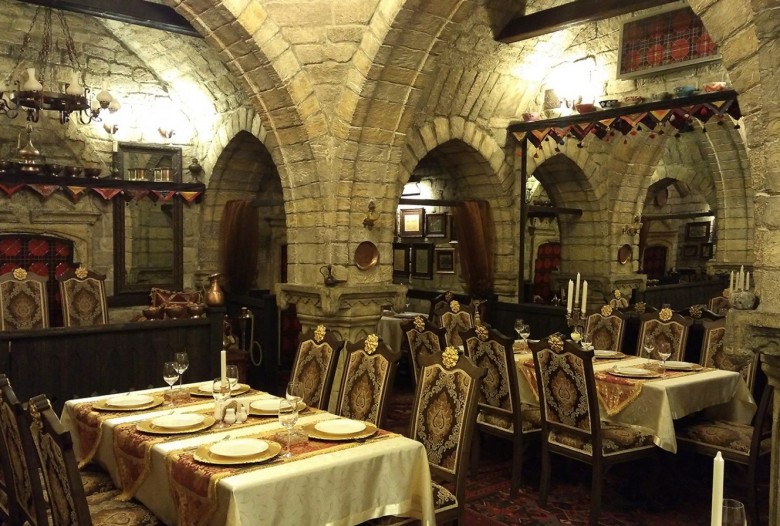
Best Restaurants in Baku: Where to Eat in Azerbaijan’s Capital
Heading to Baku and curious about the best places to eat? Baku is not only a city of ancient history, stunning architecture, and a refreshing sea breeze — it’s also a true gastronomic destination where East meets West on every plate. The best restaurants in Baku offer a diverse culinary experience: from traditional Azerbaijani cuisine to modern fusion, European classics, and regional specialties.Whether you're a passionate foodie, a curious traveler, or simply looking for a cozy dinner spot in the capital of Azerbaijan, Baku has a restaurant for every taste. We’ve gathered a list of the top 10 restaurants in Baku that every visitor should try to get a true taste of the country’s culinary culture.1. Şirvanşah Museum RestaurantA one-of-a-kind dining experience where Azerbaijani cuisine is served in an atmospheric setting filled with antiques and historical charm.Cuisine: Traditional AzerbaijaniHighlights: Live music, museum-style interior📍 Address: 86 Salatin Asgarova St.📞 Phone: +994 12 595 09 01📧 Email: officeshirvanshah@gmail.com2. Nakhchivan RestaurantExperience the authentic cuisine of Nakhchivan, featuring specialties like dzhava and govurma, in a cozy setting adorned with traditional carpets and copperware.Cuisine: Regional (Nakhchivan)Highlights: Ethnic ambiance, homemade food📍 Address: 8A Parliament Ave.📞 Phone: +994 12 480 85 85📧 Email: nakhchivan@beat.az3. ChinarTrendy and upscale, Chinar is one of the best restaurants in Baku for Asian fusion cuisine, craft cocktails, and stylish interiors.Cuisine: Pan-Asian, FusionHighlights: DJ sets, rooftop terrace, cocktail bar📍 Address: 1 Shovkat Alekperova St.📞 Phone: +994 51 404 82 11📧 Email: reservations@chinar-dining.az4. Mugam ClubLocated in the Old City (Icherisheher), this restaurant offers a cultural dive into traditional music and flavors with live mugham performances.Cuisine: AzerbaijaniHighlights: Live music, historic ambiance📍 Address: 9 Hagigat Rzayeva St.📞 Phone: +994 12 492 40 855. Art GardenTucked away in a scenic courtyard in the Old City, Art Garden blends gastronomy with creativity — often hosting exhibitions and art events.Cuisine: European & AzerbaijaniHighlights: Art space, gallery events📍 Address: 22 Asaf Zeynalli St. (Kichik Caravanserai)📞 Phone: +994 12 492 13 31📧 Email: garden@artgroup.az6. Scalini Italian RestaurantA fine-dining Italian restaurant offering authentic pasta, open kitchen concept, and a refined wine selection — perfect for romantic evenings.Cuisine: ItalianHighlights: Open kitchen, wine cellar📍 Address: 153 Neftchilar Ave. (Port Baku Tower)📞 Phone: +994 12 404 82 07📧 Email: info@scalini.az7. Firuze RestaurantA beloved local spot in downtown Baku known for its cozy ambiance, affordable prices, and authentic Azerbaijani comfort food.Cuisine: AzerbaijaniHighlights: Central location, traditional décor📍 Address: 14 Tarlan Aliyarbeyov St.📞 Phone: +994 12 493 96 348. Mari Vanna BakuStep into a vintage-style Russian home from the 1970s — a perfect nostalgic spot for hearty Russian dishes and warm hospitality.Cuisine: RussianHighlights: Retro décor, homely feel📍 Address: 93 Zarifa Aliyeva St.📞 Phone: +994 12 404 95 959. Sumakh RestaurantA luxurious reinterpretation of Azerbaijani cuisine. This contemporary restaurant offers an elegant ambiance and creative cuisine, making it perfect for fine dining in Baku.Cuisine: Contemporary AzerbaijaniHighlights: Designer interior, chef’s specialties📍 Address: 20/22 Khojaly Ave.📞 Phone: +994 12 310 02 20📧 Email: sumakh@beat.az10. Dafne RestaurantEnjoy a relaxing dinner on an open-air terrace in the heart of the city. Dafne blends European and Azerbaijani flavors in a romantic setting.Cuisine: European & AzerbaijaniHighlights: Outdoor terrace, romantic vibes📍 Address: 18A Samed Vurgun St. (Park Center, 3rd floor)📞 Phone: +994 12 493 57 54📧 Email: info@dalida.azMust-Try Dishes in Baku:Chestnut and dried fruit plov – A fragrant and traditional festive rice dish.Charcoal-grilled lamb kebab – Accompanied by lavash bread and tangy pickled onions.Dolma in grape leaves – Best enjoyed with yogurt-garlic sauce.Piti – A rich and comforting lamb stew slowly cooked in traditional clay pots.Shekerbura & pakhlava – Traditional Azerbaijani sweets that melt in your mouth.When to Visit the Best Baku Restaurants:At sunset – Restaurants like Chinar and Dafne offer stunning views over the city’s skyline.On weekend nights – Mugam Club and Art Garden are ideal for live music, cultural events, and vibrant dining.Local Foodie Tips:At Şirvanşah Museum Restaurant, reserve a window-side table to enjoy the antique-filled courtyard at night.At Scalini, don’t miss their handmade pasta paired with a glass of Italian red.At Firuze, try the plov served in clay pots and sip on traditional sherbet.Baku is more than the city of winds and flame towers — it's a culinary capital where food becomes an art and every meal tells a story. From walking the cobbled streets of the Old City to dining by the sea, the city offers something delicious around every corner.Taste chestnut rice pilaf, smoky kebabs with tandoor bread, and a cup of strong black tea with honeyed pastries — and you’ll understand why Azerbaijani cuisine is known for its heart and soul.And who knows? Perhaps one of these restaurants will spark your own culinary adventure. Bon appétit and enjoy your gastronomic adventure in Baku!

National Parks of Azerbaijan: Nature’s Treasures Await
Azerbaijan, located at the crossroads of Europe and Asia between the Caspian and Black Seas, is renowned not only for its rich culture and history but also for its diverse and breathtaking nature. The national parks of Azerbaijan are true gems of ecotourism, offering travelers the chance to experience unique biodiversity and stunning landscapes.All national parks in Azerbaijan are managed by the Ministry of Ecology and Natural Resources of the Republic of Azerbaijan. The country’s first national park, Zangazur National Park, was established in 2003.These protected natural areas were created to preserve ecosystems, rare species of flora and fauna, and to promote eco-tourism, scientific research, and environmental education.10 National Parks of Azerbaijan1. Zangazur National ParkLocated in the southern part of Azerbaijan, Zangazur National Park is one of the country’s richest areas in terms of biodiversity. It is a sanctuary for rare and endangered species such as the Persian leopard, bezoar goat, Caucasian muflon, white-tailed eagle, and golden eagle. The park is home to 58 species of animals, 39 of which are listed in Azerbaijan’s Red Book. Its mountainous terrain, alpine meadows, and crystal-clear springs make it an ideal destination for eco-tourism, wildlife photography, and nature exploration.2. Shirvan National ParkSituated in the southern lowlands, Shirvan National Park captivates visitors with its semi-desert landscapes, wetlands, and a large lake that attracts numerous bird species. It's a premier birdwatching destination in Azerbaijan, home to the great bustard, flamingos, swans, and the rare Turanian quail. Goitered gazelles roam freely across the plains year-round. The park’s unique combination of steppe and wetland ecosystems makes it a model for biodiversity conservation.3. Agh-Gol National ParkAgh-Gol, or "White Lake," is located in the Kura-Araz lowland and is a true paradise for ornithologists. Over 140 species of birds—including spoonbills, bustards, partridges, and swans—nest and winter here. The park’s ecosystem comprises protected wetlands, reed beds, and lakes that provide vital habitat for migratory and aquatic birds. Recognized under the Ramsar Convention, Agh-Gol is a wetland of international importance.4. Hirkan National ParkHirkan National Park, located in the Talysh Mountains and the Lankaran region, is a verdant forest ecosystem that has remained intact since the Tertiary period. Home to over 150 species of trees and shrubs, including unique relics such as the ironwood tree, Hirkan boxwood, and chestnut-leaved oak, this park is a living botanical museum. It also shelters rare species like the Persian leopard and Talysh pheasant. Hirkan is perfect for eco-tourism, hiking, and botanical excursions.5. Altyaghach National ParkLocated just a few hours from Baku, Altyaghach National Park enchants with its dense broadleaf forests and mountainous scenery. Forests cover 90.5% of the park’s territory, dominated by ironwood, hornbeam, beech, and birch trees. The park is home to the East Caucasian tur, an endemic species, along with deer, foxes, lynxes, and bears. It’s an excellent destination for tranquil getaways, hiking, and wildlife watching.6. Absheron National ParkLocated on the Absheron Peninsula, this national park offers a unique mix of dry steppes and Caspian coastal habitats. It is home to Caspian seals—the only marine mammals in the region—as well as gazelles, jackals, and numerous migratory birds. Visitors can explore sand dunes, salt marshes, and diverse coastal flora. Designated eco-trails, observation points, and guided tours enhance the visitor experience.7. Shahdag National ParkShahdag National Park is the largest in Azerbaijan and the entire Caucasus region. It stretches across the majestic Greater Caucasus Mountains, sharing its borders with Russia and Georgia. With dramatic gorges, glaciers, alpine meadows, and high-altitude lakes, Shahdag offers spectacular landscapes. It’s both a hub of eco-tourism and a major ski resort with developed infrastructure, making it ideal for trekking, climbing, skiing, and nature photography.8. Goygol National ParkCentered around the stunning Lake Goygol, this national park is a crown jewel of the Lesser Caucasus. Its pristine forests, crystal-clear waters, and over 420 species of plants create a captivating natural setting. Wildlife includes brown bears, roe deer, lynxes, Caucasian red deer, and more than 100 bird species. Lake Goygol and the surrounding mountains are popular for hiking, photography, and outdoor relaxation.9. Samur-Yalama National ParkThe youngest national park in Azerbaijan, Samur-Yalama covers the Caspian coastline and lush northern forests. It shelters rare animals such as the eastern imperial eagle, lynx, reed cat, and Caspian red deer. The coastal waters are rich in fish species like sturgeon, trout, pikeperch, and eel. Its diverse landscapes make the park ideal for eco-tourism, fishing, and peaceful nature retreats.10. Gizilaghaj National ParkThis wetland paradise is located in the Kura River delta along the Caspian Sea. Gizilaghaj National Park is renowned for its unique aquatic and marsh ecosystems and is a critical stopover for migratory birds. Visitors can spot pelicans, flamingos, cranes, and other rare waterfowl. The park plays a vital role in the conservation of Azerbaijan’s biodiversity and is included in the Ramsar List of Wetlands of International Importance.Azerbaijan’s Natural Heritage Under ProtectionThe combined area of Azerbaijan’s 10 national parks surpasses 310,000 hectares, accounting for over 3.6% of the country’s total land. These protected areas are crucial for sustainable tourism development, environmental preservation, and scientific research. Azerbaijan’s national parks are ideal for eco-tourism, family getaways, wildlife photography, and biodiversity exploration.A journey through Azerbaijan’s national parks is a chance to discover untouched nature, rare wildlife, and awe-inspiring landscapes. Step into a realm where natural beauty intertwines with cultural heritage, and preserving the environment stands as a national commitment. With government support, Azerbaijan’s natural treasures are becoming more accessible to tourists while being preserved for future generations.Why Visit Azerbaijan’s National Parks?Unique natural landscapes: from deserts to mountains and coastal forestsRich biodiversity, including rare and endangered speciesOpportunities for eco-tourism and outdoor adventuresVisitor-friendly with safe and accessible trailsSupporting environmental conservation and awarenessWhen planning your trip to Azerbaijan, be sure to include one or more national parks in your itinerary. It’s a perfect way to experience the natural beauty and ecological richness of the country.
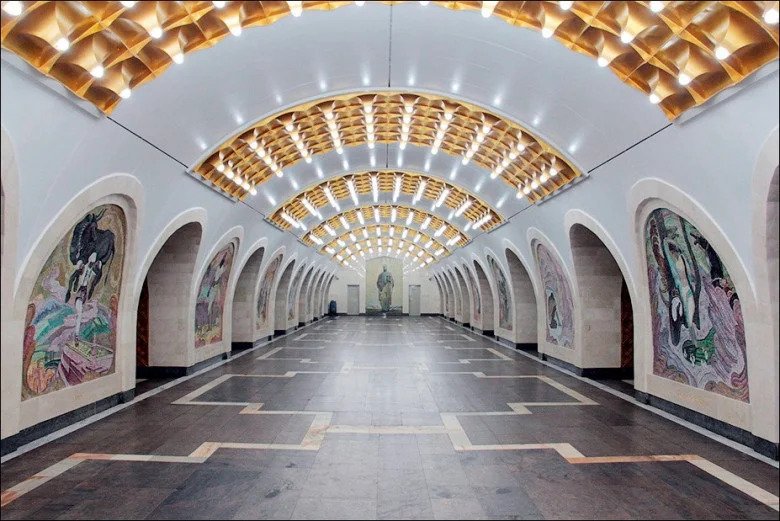
Baku Metro: Your Guide to the Underground Heart of the City
The Metro in Baku is more than just a means of transportation – it’s a living part of the city’s culture, history, and daily life. As of today, the Baku Metro operates three lines: red, green, and purple, with a total of 25 stations. The metro runs from 6:00 AM to midnight, although schedules may vary in exceptional circumstances, such as the COVID-19 pandemic in 2020.The metro uses a modern contactless card payment system. There are two types of Baku Metro Cards: one for short-term use (ideal for tourists and occasional users), and a long-term card introduced in 2015 for frequent commuters. One ride on the metro or bus costs 30 qəpik (approximately 13 Russian rubles as of May 2020).Cards can be topped up at terminals simply by placing them on the reader panel – quick, efficient, and queue-free.A Soviet-Era Dream RealizedThe idea of building a metro system in Baku emerged as early as the 1930s, but actual construction didn't start until 1959, when the city's population was approaching the one-million mark. The first line of the Baku Metro opened on November 25, 1967. It started at Baksovet station (renamed Icherisheher in 2008), cutting diagonally through the city to serve key residential and industrial districts.Construction faced numerous challenges, particularly due to the city’s proximity to the Caspian Sea. Underground waters and sudden bursts of pressurized canals made the engineering process difficult. Icherisheher station, built in the Old City, is the deepest in the system, reflecting the complex geology and rich historical surroundings.Today, Icherisheher station features a striking glass pyramid above ground (reminiscent of the Louvre in Paris), and inside, a beautifully decorated hall with bas-reliefs that echo Baku’s fortress heritage.From Soviet Ideology to National IdentityThe Baku Metro was the fifth to be constructed in the USSR, following Moscow, Leningrad, Kyiv, and Tbilisi. Station names once honored Soviet figures, some with little or even negative associations with Azerbaijan. For instance, Khatai station was originally named after Bolshevik S. Shaumyan, who was linked to tragic events in 1918. After independence, many stations were renamed to reflect Azerbaijani history and heroes.Metro Expansion After IndependencePost-independence, the Baku Metro continued to grow. Stations such as Koroglu (formerly Meshadi Azizbekov), Gara Garayev (formerly Avrora), Neftchilar, and Khalglar Dostlugu (Friendship of Peoples) were added. In 2000, the Azi Aslanov station became the new terminus of the red line.One of the crown jewels of the green line is Nizami station, often considered the most beautiful in the system. Its walls are adorned with mosaics inspired by the epic poems of Nizami Ganjavi, and the sparkling ceiling lights create an atmosphere reminiscent of Eastern Renaissance literature.Equally memorable is Elmler Akademiyasi station ("Academy of Sciences"), located near major universities including Baku State University. This station is a hub of student life and is often called “the station of eternal youth.”Symbolism Underground: A Journey Through HistoryAn emotional connection exists between two stations – January 20 (20 Yanvar) and Azadlig Prospekti (Independence Avenue). January 20 is a national day of mourning commemorating victims of Soviet military actions in 1990. Locals often reflect on the symbolism: "To reach Independence, one must pass through January 20" — even in the metro.Future Developments and LegacyAlthough the collapse of the USSR in the early 1990s delayed many construction projects, several tunnels had already been built. This allowed for the completion of stations such as Nasimi, Azadlig Prospekti, and Darnagul in later years. The purple line is now under expansion, and new stations are planned as Baku continues to grow.Whether you're a resident or a traveler, the Baku Metro is more than a way to get around — it's a journey through the layers of Azerbaijan’s history. With a convenient Metro Card, fast connections, and architectural beauty, the Metro in Baku offers both function and inspiration.

List of Baku Beaches: Where to Enjoy Your Beach Holiday by the Caspian Sea?
Are you planning your summer vacation in Azerbaijan and wondering how is the weather in Baku and which Baku beaches are the best to visit? You’re in the right place!Baku is not only a vibrant modern capital with striking architecture and rich history but also one of the top destinations on the Caspian Sea for a perfect beach holiday in Baku. If you want to know where to swim, relax, and enjoy the sun in Baku, our detailed guide will help you choose the best spots.🌞 Why Spend Your Summer on Baku Beaches?Baku enjoys a warm climate with a long beach season running from mid-June to late September. The city’s beaches are famous for their cleanliness, safety, and variety — from quiet secluded coves to trendy beach clubs with lounges and live DJ performances. This makes Baku an ideal place for anyone wondering how is the weather in Baku during summer and seeking a memorable seaside experience.📌 Top Baku Beaches to Visit🏝 Family-Friendly BeachesPerfect for travelers with children or those looking for calm and comfort:Bilgah Beach — a spacious beach with a gentle sea entry, showers, cafes, and sun loungers. Nearby hotels provide easy accommodation options.Mardakan Beach — a local favorite with clean waters and kid-friendly play areas.Shikhov Beach — one of Baku’s oldest beaches, with calm waters, a wide shore, cafés, showers, and shaded areas — great for families.🎉 Beaches for Young Crowd and PartiesIf you’re into music, dancing, and active nightlife:Amburan Beach Club — one of the most fashionable beach clubs featuring pools, live DJs, and vibrant parties.Zagulba Beach — lively with cafes and clubs hosting regular evening events.Sea Breeze Resort — a luxury spot with live shows, vibrant parties, and top-notch amenities.🌿 Secluded and Natural BeachesFor those who want to enjoy peace and nature:Nardaran Beach — quiet area with wild, scenic coastline.Buzovna Beach — simple charm, natural setting, and refreshing sea breeze.Novkhani Beach — wide, calm, and relaxing shore.✅ Essential Tips for Tourists Visiting Baku BeachesGo early or after 4 PM to skip the heat and soak in the softer sun.Always use sunscreen with high SPF (30–50), wear a hat and sunglasses to protect yourself.Choose beaches with lifeguards, especially if you’re visiting with kids.Go early or after 4 PM to skip the heat and soak in the softer sun.🌟 Editor’s Advice for the Best Beach ExperienceCapture breathtaking sunset photos after 6 PM for unforgettable memories.Take snacks and garbage bags when visiting natural beaches like Novkhani or Nardaran. Leave the place clean.Be cautious of hidden sea currents; swim where lifeguards are present.Keep the volume low on personal music devices to respect other visitors.Prefer beaches with light-colored sand like Bilgah or Mardakan for safer and more comfortable stays with children.Some beaches offer free access before 9 AM or after 6:30 PM — check locally to save money.Remember, water is your best friend — avoid dehydration by drinking enough fluids.📍 How to Reach Baku Beaches?Most of the popular beaches are 20 to 40 minutes from downtown Baku. Options include:Taxi services such as Bolt or Uber — quick and convenient.Public buses — economical but slower.Organized tours — great if you want to combine beach time with sightseeing.🔚 Final ThoughtsWondering how is the weather in Baku for a beach vacation? The answer is clear: warm and welcoming! Baku’s beaches offer something for everyone — from peaceful retreats to lively party scenes and family-friendly spots. Plan your trip smartly, keep track of the forecast, and don’t forget your sunscreen — the Caspian Sea is ready to welcome you for an unforgettable summer holiday!

Prices in Baku: How Much Does It Cost to Travel in Azerbaijan's Capital?
Have you ever wondered what it’s like to stroll through a city where skyscrapers reflect in the Caspian Sea, and around every corner awaits a cozy café with the aroma of freshly brewed tea and hot tandoor bread? Welcome to Baku — a city where Eastern generosity meets European comfort.But before you explore the narrow alleys of Icherisheher or take in the panoramic view from the Flame Towers, one question is bound to come up: how much does it cost? Spoiler: Prices in Baku are pleasantly surprising.🏨 Accommodation: From Hostels to Luxury SuitesPrices in Baku for accommodation suit every traveler — whether you're a backpacker or a luxury seeker.Hostels: from 10–20 AZN (≈ $6–12)3–4* Hotels: 60–120 AZN (≈ $35–70)Luxury Hotels: from 150 AZN (≈ $88+)👉 Budget travelers will find cozy hostels in the city center, while comfort lovers can enjoy boutique hotels with views of the Caspian Sea.🍽 Food: Delicious, Filling, and AffordableAzerbaijani cuisine is a culinary adventure that won't drain your wallet.Breakfast at a café: 5–10 AZN (≈ $3–6)Lunch at a diner: 8–15 AZN (≈ $5–9)Dinner at a restaurant: from 25 AZN (≈ $15)👉 Whether it's street food or upscale dining, prices in Baku make it easy to eat well every day.🚇 Transport: Easy and InexpensiveGetting around the city is simple and budget-friendly: metro, buses, taxis, and e-scooters are all available.Metro/bus: 0.30 AZN (≈ $0.18)Taxi rides around the city: 3–7 AZN (≈ $1.80–4.10)E-scooters: from 0.20 AZN/min (≈ $0.12)👉 Even taxi rides across the city cost far less than in most European capitals.💡 For more detailed information on Baku's transport system, click here.🏛 Attractions and EntertainmentBaku offers more than beaches and boulevards — it’s full of cultural gems.Carpet Museum: 10 AZN (≈ $6)Maiden Tower: 15 AZN (≈ $9)Cable car ride: 4 AZN (≈ $2.40)👉 You can enjoy a full day of sightseeing for as little as $10–15.🛍 Souvenirs and ShoppingGifts from Baku combine taste, tradition, and the warmth of the East.Pakhlava and sweets: 3–5 AZN (≈ $1.80–3)Tea and spices: from 5 AZN (≈ $3)Handmade souvenirs: from 2 AZN (≈ $1.20)👉 A modest budget will let you bring home a sweet piece of Azerbaijan — whether it’s fruit preserves or a box of lokum.🧳 Conclusion: Baku Offers Great Value for Your Travel BudgetPrices in Baku will pleasantly surprise even seasoned travelers. Here, you can enjoy rich cuisine, cultural discoveries, and seaside walks — all without breaking the bank. Baku blends affordability with quality, tradition with modern comforts — everything you need for a vibrant and comfortable vacation.Planning a trip? Add Baku to your travel list — you’ll experience unforgettable moments at a great price.

